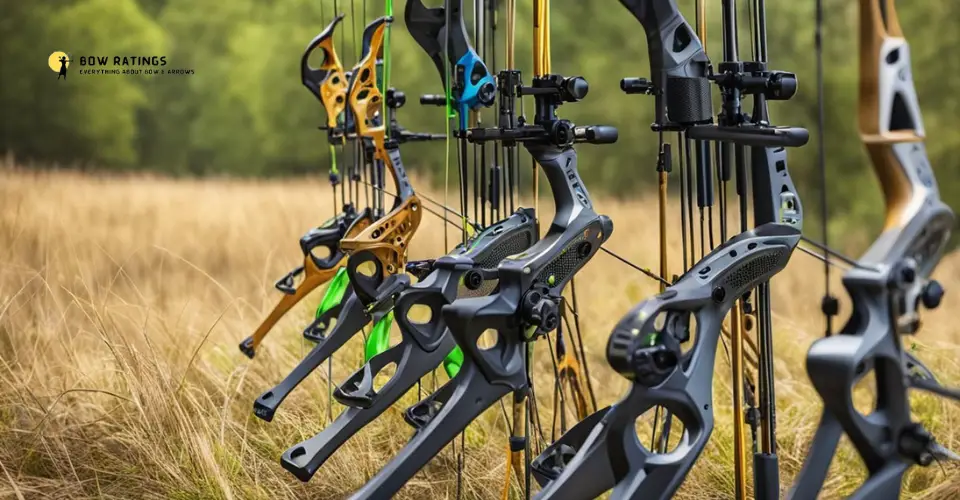Bowhunting presents a challenge for both newcomer and veteran hunters, and this additional level of excitement and fun may be worth pursuing! Archery seasons are often longer than rifle or muzzleloader seasons, and the sport of bow hunting demands a higher level of skill and precision. Bow hunting is a one-of-a-kind experience that allows you to see wildlife from a whole different perspective. At about 30 yards from your target, you must use a steady hand with a small margin of error.
When you first start bowhunting, the most crucial question you need to answer is, “How do I go about selecting a compound bow?” To help you select the perfect compound bow, we are here to help!
Why Choose a Compound Bow?
Accuracy and efficiency are essential for bowhunters, and a great compound bow helps with both. Over the years, there have been major modifications to the compound bow to aid increase accuracy and efficiency, and the bows available now much outperform those of the past.
Compound bows are ideal for providing a small, light, and exhilarating bowhunting experience, and they are a must-have for anyone new to the sport.
Things to Consider When Choosing the Best Compound Bow for Beginners
When choosing a compound bow, it’s usually a good idea to learn the various terms associated with it. After all, knowing the terminology for compound bows will be useful while looking for one. When choosing a compound bow, the first thing to consider is your intended use. The second step, and possibly the most crucial, is to pick a bow that is the perfect size for you!
Here are some factors to consider when choosing the best compound bow for you:
Draw Length
The draw length of your compound bow determines how long it will take to draw before discharging. This is the distance from the string to the deepest portion of your grip, and selecting a compound bow with the appropriate draw length for you is critical for shooting accurately and correctly.
Your local archery shop can measure your proper draw length, but it is rather simple to do at home. To measure your draw length, form a “T” with your body and extend your arms straight to the side. Allow a friend to use a measuring tape to connect the tips of one and the other middle fingers. This will determine your wingspan. Divide your wingspan by 2.5. This will give you the ideal draw length.
Draw Weight
Draw weight is the weight (in pounds) that you must pull back on to attain full draw before firing your compound bow. The stronger the draw weight, the faster the arrow will fire; however, as a beginner, you should start with a lighter draw weight and work your way up. Choosing an excessively heavy draw weight might induce tension, resulting in shakiness and loss of focus during shooting.
To get the proper draw weight for you, match the weight to your strength. Draw and hold the position for 20-30 seconds. If you can hold this position for an extended period of time without shaking or becoming fatigued, the draw weight is appropriate.
The more you bow hunt, the stronger your shooting muscles become. This allows you to raise your draw weight. Many compound bows include an adjustable draw weight, which allows you to raise the weight, and hence your speed, as you gain skill.
Bow Length
Your compound bow’s length is measured from axle to axle and accurately reflects the length of the bow itself. A shorter bow length may be more appropriate for confined shooting conditions, such as treestands.
A longer bow length may be preferable when shooting targets or in open fields. Bow length is entirely up to your discretion, however larger bows are more forgiving for novices. Just be careful to get a bow that is not too long for you.
Brace Height
It would be best if you also considered the brace height of your compound bow, which is the space between your bowstring and handle grip when it is resting. Compound bows with longer brace heights are usually ideal for novices since they provide more support for your shot and are easy to draw and hold.
Bow Weight
The weight of the bow is also a significant consideration. This goes hand in hand with how you intend to use your bow.
A lightweight bow is easier to wield and thus an excellent choice for a starting archer. It’s also useful for someone hunting from a treestand or going on long hikes through the woods. The trade-off with a light bow is that it produces far more vibration and thus loudness.
Conclusion:
In conclusion, selecting the best compound bow for beginners involves considering several factors such as draw weight, draw length, bow length, bow weight, and brace height. It is critical to try out different bows to see which one feels the most comfortable and fits your shooting style. Remember to speak with experienced archery professionals who can offer advice and aid in selecting the best bow for you. With the correct compound bow, you’ll be on your way to really enjoying archery.

